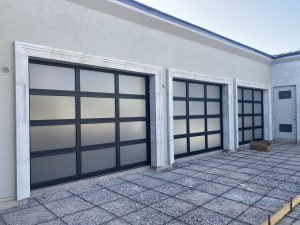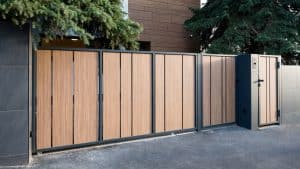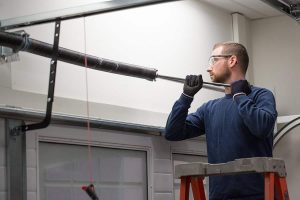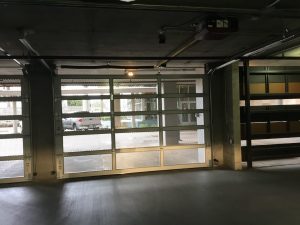Living in Arizona means dealing with intense heat for much of the year. For homeowners, this extreme desert climate poses unique challenges, especially when it comes to maintaining a comfortable and energy-efficient home. One of the most overlooked solutions for battling the Arizona heat is proper garage door insulation. Not only can it significantly reduce heat transfer into your garage, but it can also protect your belongings, reduce your cooling costs, and extend the lifespan of your garage door components.
In this guide, we’ll break down everything you need to know about garage door insulation in Arizona—from choosing the best materials to understanding R-values and energy efficiency—so you can make the smartest investment for your home.
Why Garage Door Insulation Matters in Arizona
Unlike other parts of the country where insulation is used primarily to retain heat, in Arizona, it serves the opposite purpose—to keep the extreme heat out. In the summer months, garage temperatures can soar well above 100°F, turning your garage into an oven that radiates heat into adjacent rooms and puts added strain on your air conditioning system.
An insulated garage door can act as a thermal barrier, helping regulate the temperature inside the garage. This is especially important if your garage is attached to your house or used as a workspace, gym, or storage area. Insulation helps reduce energy consumption, improves comfort, and even reduces noise.
Understanding Garage Door R-Value and Why It Matters in the Desert
When evaluating insulation, one of the most important factors to consider is the R-value. This number represents the insulation’s ability to resist heat flow—the higher the R-value, the better the insulation.
In Arizona’s hot and dry environment, choosing a garage door with a high R-value is crucial. For optimal performance, homeowners should look for garage doors with an R-value of at least R-9 or higher, depending on how the space is used. For garages that are frequently accessed or directly connected to the home, R-13 to R-18 insulation is more suitable.
The Best Garage Door Insulation Materials for Hot Climates
Not all insulation materials are created equal, especially when dealing with the Arizona heat. Here’s a breakdown of the most effective types of garage door insulation materials for desert climates:
Polystyrene Insulation
Polystyrene panels are commonly used in garage doors and come in both expanded (EPS) and extruded (XPS) forms. They are lightweight, easy to install, and offer moderate insulation values. EPS has a slightly lower R-value but is more cost-effective.
Polyurethane Foam Insulation
Polyurethane is a dense foam insulation that is injected into the door’s panels. It expands to fill all gaps, creating a solid, bonded layer. This type offers the highest R-values (often exceeding R-15) and provides excellent thermal resistance and noise reduction, making it ideal for Arizona’s climate.
Reflective or Radiant Barriers
These materials are designed to reflect heat rather than absorb it. While they don’t provide traditional insulation, radiant barriers can be a valuable addition when used alongside foam or polystyrene to combat solar heat gain.
Each insulation type has its advantages, but for the harsh Arizona sun, polyurethane foam generally provides the best combination of efficiency, durability, and heat resistance.
Insulated vs. Non-Insulated Garage Doors in Arizona
The difference between insulated and non-insulated garage doors is more than just comfort—it directly affects energy bills, structural integrity, and daily usability.
A non-insulated garage door is essentially a single layer of metal or wood that provides little to no barrier between the scorching outdoor air and the interior of your garage. This allows heat to build up rapidly, turning your garage into a sauna and increasing the temperature in adjacent rooms.
An insulated door, on the other hand, features multiple layers and a thermal barrier that significantly reduces temperature fluctuations. This means:
- Lower cooling costs during summer months
- Longer lifespan of door components due to reduced heat stress
- Enhanced soundproofing and durability
- Better protection for heat-sensitive items stored in your garage
In Arizona, the benefits of choosing an insulated garage door far outweigh the initial investment.
How to Insulate Your Garage Door in Arizona
If you’re considering a garage door insulation upgrade, there are a few ways to go about it:
1. Upgrade to a New Insulated Garage Door
The most effective way to gain long-term energy savings and temperature control is by installing a new insulated door. This ensures uniform insulation throughout the door and better seals around the frame and bottom.
2. Add Insulation to an Existing Garage Door
If your current door is in good condition but uninsulated, you can add insulation panels. Kits are available with pre-cut foam boards or radiant barriers. While this option doesn’t deliver the same performance as a factory-insulated door, it can still make a noticeable difference in comfort and temperature control.
3. Weatherstrip and Seal the Door
Insulation is only effective when combined with proper weather stripping. Ensure the garage door has tight seals on all sides, including the bottom threshold, to prevent hot air infiltration and energy loss.
Garage Door Energy Efficiency: The Arizona Advantage
One of the key reasons homeowners seek garage door insulation in Arizona is to boost overall energy efficiency. A properly insulated garage door reduces the workload on your HVAC system by keeping heat from penetrating the house through the garage wall. This can result in lower monthly energy bills, especially during peak summer months when air conditioning is used most heavily.
Additionally, many energy-efficient garage doors come with other features such as tighter seals, UV-resistant coatings, and long-lasting weatherproof materials—all of which are beneficial in a hot, arid climate.
Garage Heat Protection Tips for Maximum Comfort
Insulating your garage door is the first step, but there are other strategies to help you keep your garage cool:
- Install a ventilation system or exhaust fan to remove trapped hot air
- Use light-colored or UV-reflective paint on your garage door to reflect heat
- Shade your garage with awnings or trees to reduce direct sunlight
- Avoid using heat-generating appliances like dryers during peak afternoon hours
Combining insulation with these techniques can dramatically improve garage usability year-round.
Choosing the Right Insulated Garage Door for Your Home
When selecting the perfect insulated garage door for Arizona’s climate, consider the following factors:
- R-value: Higher is better, especially if the garage is connected to your home
- Material: Steel doors with polyurethane insulation offer strength and maximum heat resistance
- Design: Look for doors with tight seals, insulated windows (if any), and rust-resistant coatings
- Functionality: Decide if you need a door with smart controls, wind resistance, or commercial-grade insulation for extreme use
Consulting with a professional garage door specialist can help you evaluate all these elements and choose a door that fits your climate, style, and budget.
Conclusion: Beat the Arizona Heat with the Right Garage Door Insulation
Choosing the right garage door insulation is one of the smartest decisions you can make as a homeowner in Arizona. Not only does it improve your home’s comfort and energy efficiency, but it also protects your investment from the damaging effects of extreme heat. Whether you opt for a fully insulated garage door or upgrade your current one with high-performance materials, the benefits are immediate and long-lasting.
Ready to make your garage more efficient and heat-resistant? Stapley Action Garage Door specializes in insulated garage doors and energy-efficient upgrades tailored for Arizona’s desert climate. Contact us today to schedule a consultation and discover how the right insulation can transform your garage into a cool, comfortable, and cost-saving part of your home.









